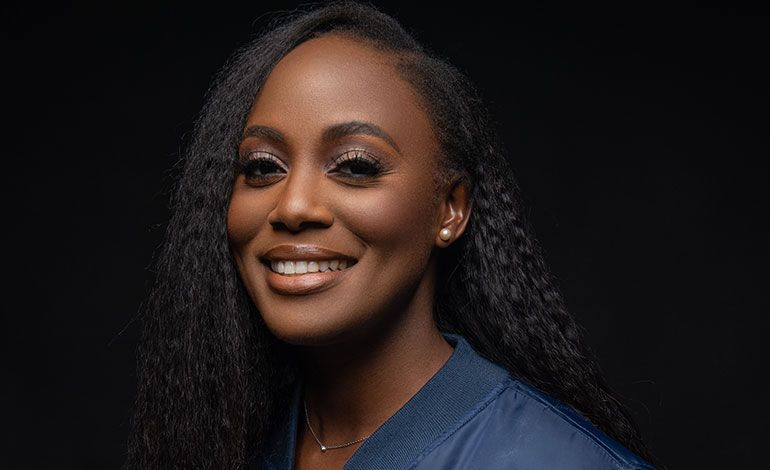First Black Woman Making Historic Achievement In Aerospace Engineering
In the broad and expanding field of aerospace engineering, where science constantly pushes new boundaries of what can be achieved by the power of human innovation, stands a woman who shattered the glass ceiling and left a positive mark on the pages of history. Dr. Wendy A. Okolo is a renowned aerospace engineer, a trailblazer, and a legend to countless generations of women and underrepresented minorities pursuing careers in STEM. Her journey, from the city streets of Lagos, Nigeria, to NASA’s cutting-edge research facilities, is a testament to motivation, perseverance, and achieving one’s goal.

For many, aerospace engineering is a field reserved for the crème de la crème but Wendy Okolo’s story challenges this notion. She shattered stereotypes and redefined possibilities for women, particularly Black women engineers. However, behind her impressive NASA career lies decades of curiosity, academic excellence, and an unrelenting passion for flight. Born in 1989 to a family of six in Nigeria, Wendy grew up in an environment where education was highly valued. Her parents instilled in her the belief that hard work and education would unlock infinite opportunities. Recognizing her exceptional intellect, they encouraged her to study diligently. Wendy attended Queen’s College in Lagos, a prestigious all-girls secondary school renowned for academic excellence. It was there that she developed a strong interest in the sciences, particularly mathematics and physics.
After completing high school, Wendy traveled to the United States to pursue her higher education. She enrolled at the University of Texas at Arlington (UTA), an experience that profoundly impacted her life. Initially, she was uncertain about what engineering entailed. Like many freshmen, Wendy was undecided about which engineering discipline to study. However, she soon discovered aerospace engineering, and everything fell into place. She was drawn to the prospect of designing, building, and improving airplanes and spacecraft. The idea of contributing to the advancement of flight and space discovery thrilled her, leading her to study the intricacies of the field.

Her experience at UTA was not rosy. Aerospace engineering is one of the most demanding disciplines, requiring a solid foundation in physics, mathematics, and complex systems to succeed. But Wendy was determined not to be left behind. Her unwavering dedication fueled her passion for this opportunity.
Aside from being a high-achieving academic student, Wendy was also highly active on campus. She was a member and eventually the president of the Society of Women Engineers, a club that mentored and sponsored female engineers. Additionally, she was part of the African Student Society, where she interacted with students from diverse backgrounds. These experiences not only enriched her social life but also helped her develop strong leadership skills.
Wendy understood that a successful aerospace engineering career required more than just good grades. Practical experience was essential. To bridge the gap between theory and practice, she pursued internships and eventually secured a highly competitive internship opportunity at Lockheed Martin, a multinational defense and space corporation. As part of the internship, she contributed to the development of the mission plan for NASA’s Orion spacecraft, a groundbreaking mission aimed at sending humans farther into space than ever before.
During her internship, Wendy supported two main departments:
1. The Systems Engineering Requirements Management Office, where she helped define the technical requirements and goals of the mission.
2. The Hatch Mechanisms team of the Mechanical Engineering Department, where she studied and contributed to the design of the astronauts’ hatch entry and exit mechanisms.
While others would have been content with a Bachelor’s degree and a decent-paying job, Wendy had higher aspirations. Guided by her professors and mentors, she pursued a PhD in aerospace engineering, determined to become a pathfinder researcher in the field. Her research focused on aircraft formation flight, an innovative approach to improving the efficiency of air travel by positioning planes to fly together in the most efficient locations. In order words, her research was aimed at enhancing the cost-effectiveness and environmental sustainability of air travel.
Wendy’s innovative research impressed the Air Force Research Laboratory (AFRL) and the American Institute for Aeronautics & Astronautics (AIAA), which funded and granted her research. In 2015, at the age of 26, Wendy became the first African American woman to earn a PhD in aerospace engineering from the University of Texas at Arlington (UTA)
Wendy’s remarkable achievement paved the way for young women of color to dream big and defy societal expectations. Her Ph.D. earned her a spot at NASA’s Ames Research Center in California, where she works as an aerospace research engineer. She has been entrusted with a string of high-risk projects, including serving as a sub-project manager for NASA’s SWS project.

Wendy’s research focuses on designing methodologies to predict and detect GPS failure in UAVs, enhancing reliability and safety in UAV operations. She also led a team that developed precision landing methods for space missions, significantly improving spacecraft navigation and precision landing.
Through her accomplishments, Wendy has shattered the notion that aerospace engineering is a male-dominated field. She is revolutionizing the industry by demonstrating that diversity in STEM equals innovative ideas and better solutions.
Wendy has received several awards for her professional contributions, including the Black Engineer of the Year Award (BEYA) for Most Promising Engineer in the U.S. government in 2019. She was also the inaugural female recipient of the NASA Ames Early Career Researcher Award in 2019 and received the NASA Exceptional Technology Achievement Medal in 2021 for her pioneering efforts.
Beyond recognition, Wendy is passionate about promoting underrepresented minorities and women in STEM. As Special Emphasis Programs Manager for Women in NASA Ames, she has advocated for diversification policies, including establishing nursing rooms for working mothers and using gender-neutral language in job descriptions.

